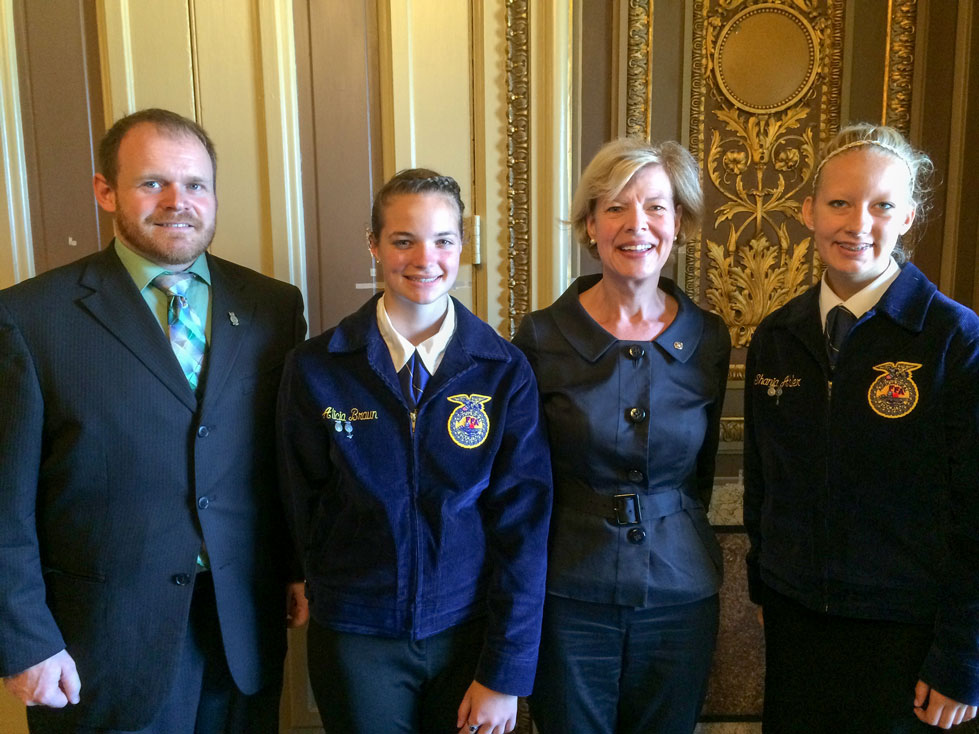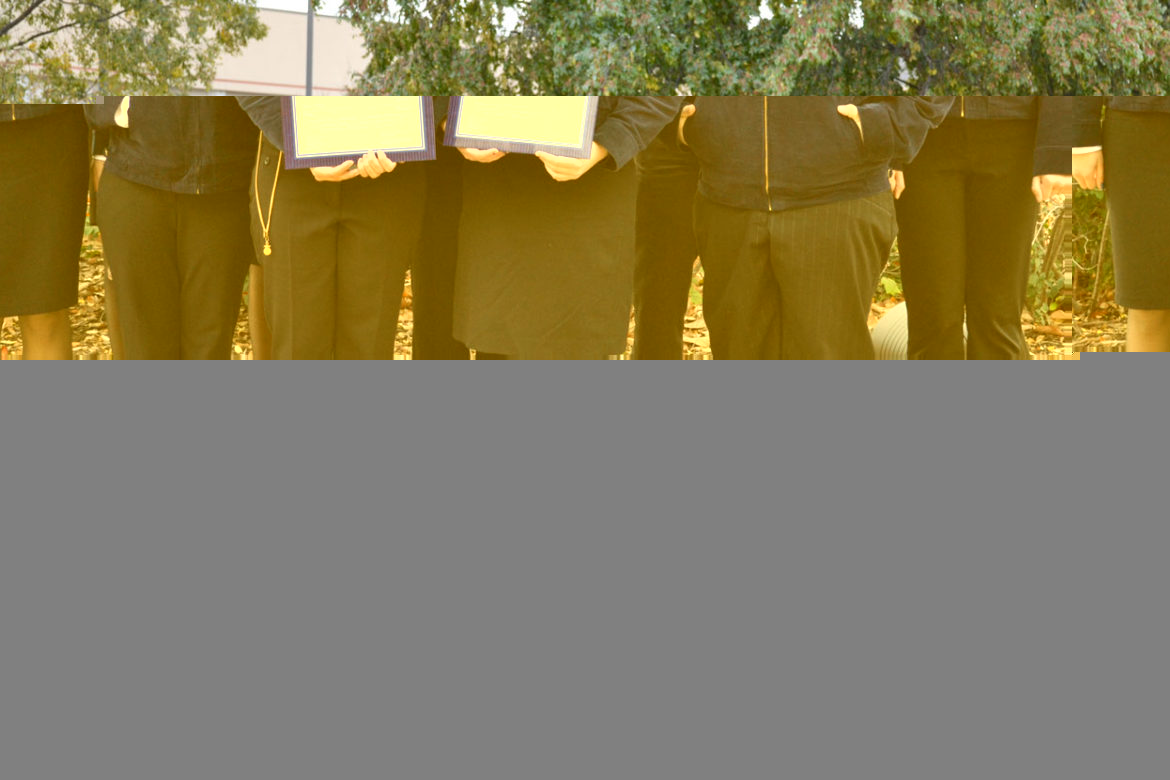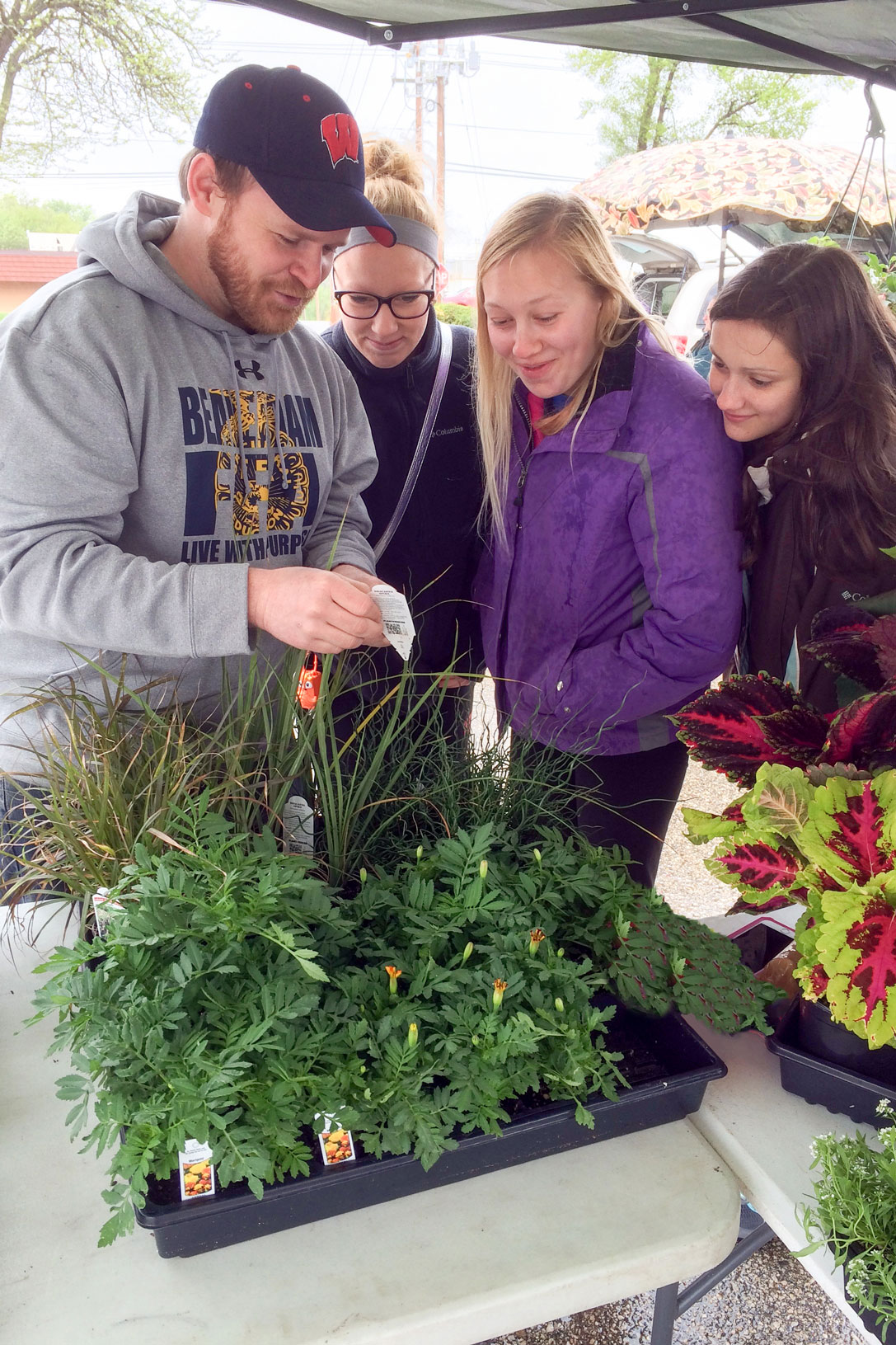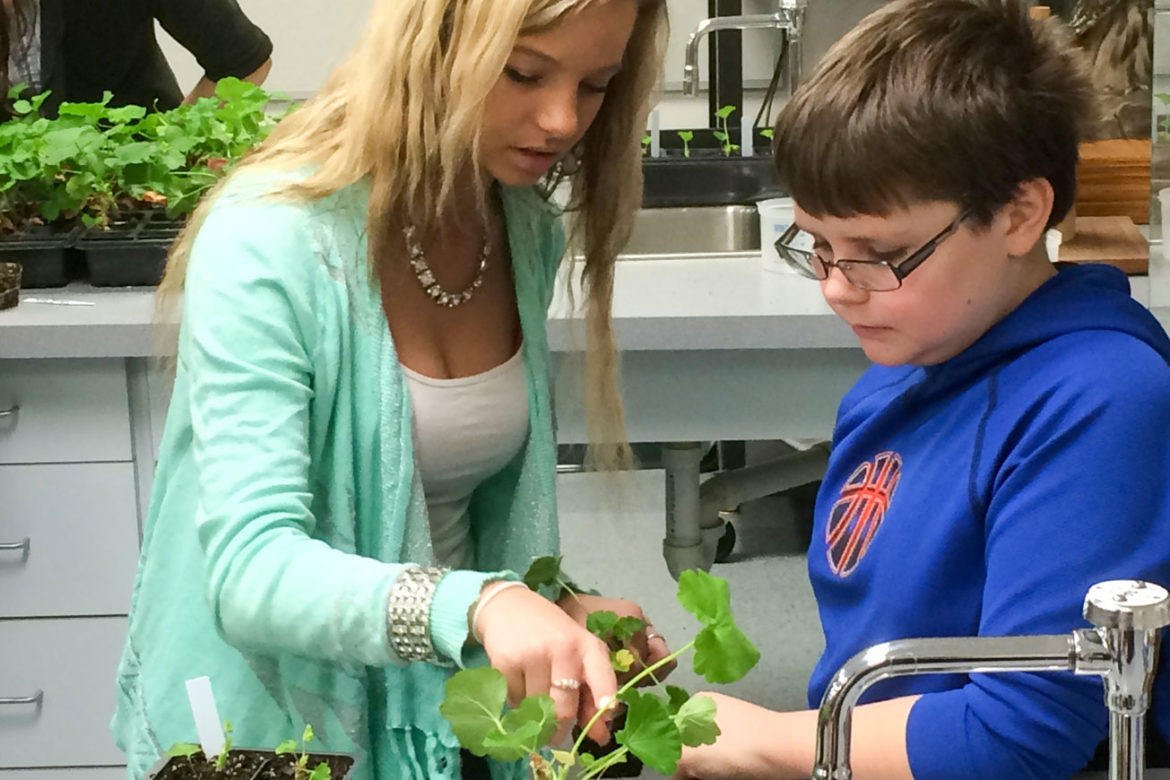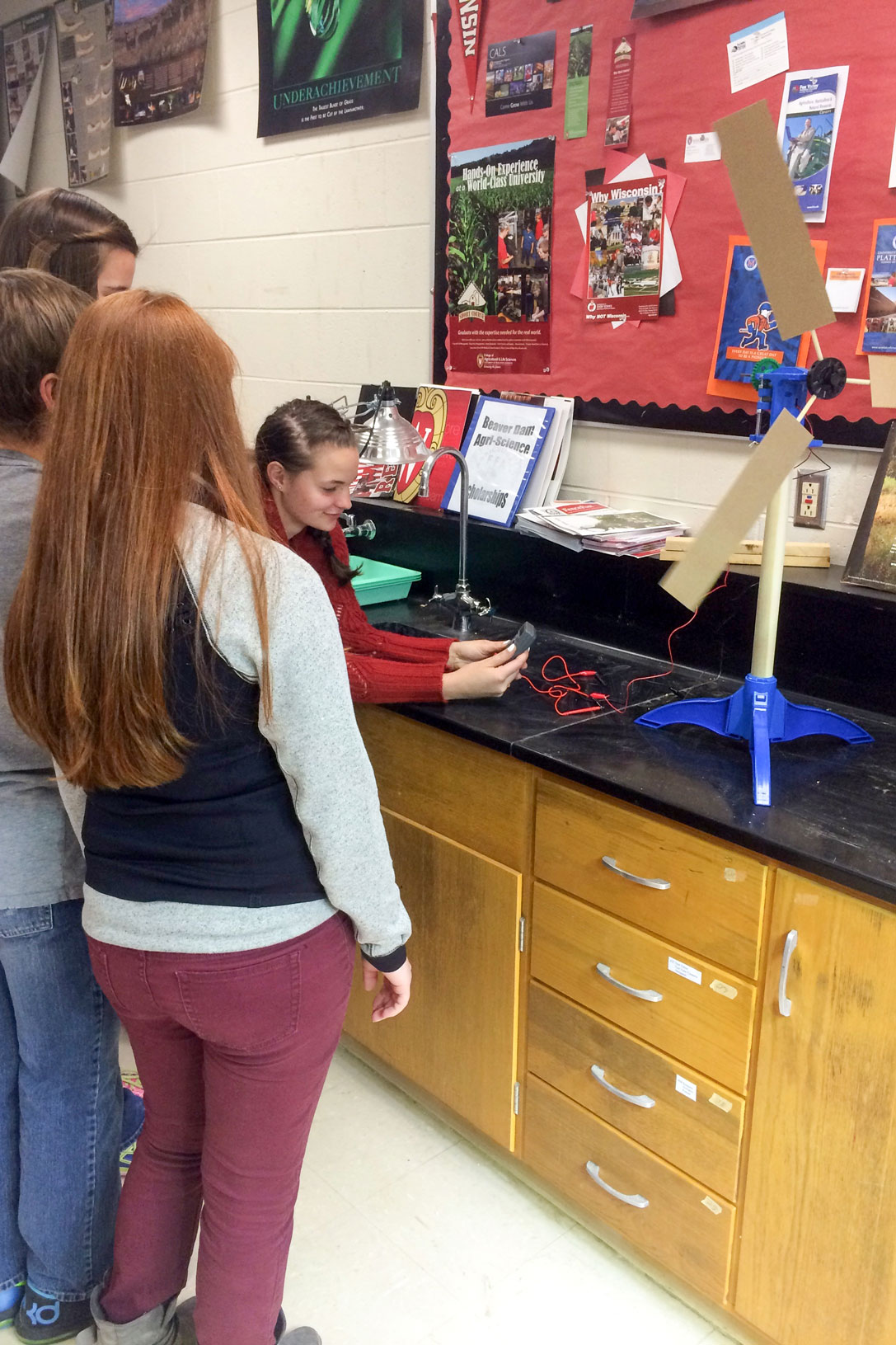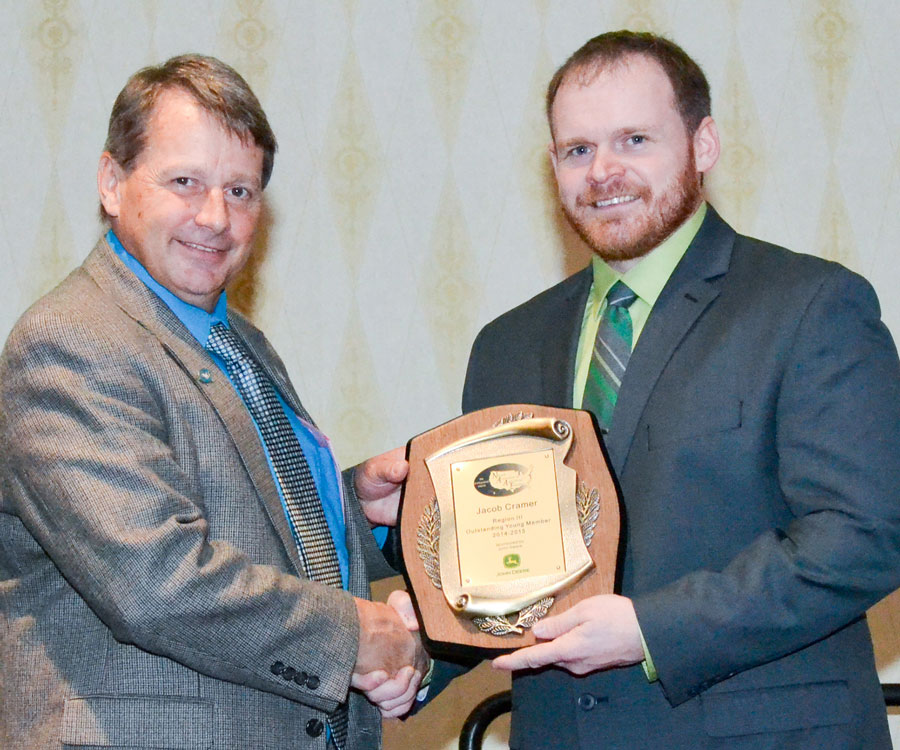By: Jacob Cramer
As a new year starts, it feels like a time for reflection and I am drawn to the reasons I love what I do. By doing this, I hope to bring more exposure to agricultural education. I am in my seventh year of teaching high school agriculture, my fifth year in Beaver Dam. This is a focus on the Beaver Dam Agri-Science Program, because it is one that I know really well, but we are just one example of hundreds of great programs throughout the Midwest and thousands across the United States.
Agricultural Education is one of the six Career and Technical Education (CTE) areas; these courses are taught knowing we learn best by doing. If you walk into nearly any CTE room, you see students active in hands-on learning. CTE is one of the most underrated areas of education. Wisconsinites should be proud of the 88.6% graduation rate for the class of 2014 (tied for third in the nation and up 2.9% since 2010). Wisconsin students who take CTE courses statistically exceed that with a graduation rate of between 95.7% and 96.5%. If we just look at Wisconsin students who took agricultural courses, their graduation rate is 98.3%. We can all be proud of this! CTE courses are quietly preparing our students for success in both college and career readiness.
Agriculture also has a lot to be proud of both in Dodge County and in Wisconsin. Wisconsin’s strong agricultural industry generates $88.3 billion in economic activity; in Dodge County, it’s $2.9 billion. Wisconsin Agriculture employs 413,500 people, and 9,855 are Dodge County residents. That is just part of the story: A recent report from the USDA and Purdue University estimates the United States will add 57,900 high-skilled job annually in agriculture, food and natural resources. According to the same report, there are only on average 35,400 new college graduates with a degree in agriculture or related fields, leaving us 22,500 employees short each year. These jobs will become only more important as we move closer to one of our most pressing worldwide challenges of feeding the 9 billion people inhabiting our plant by 2050.
In my classes, I focus on preparing students with knowledge and skills that will ready them for postsecondary success in both college and careers related to agriculture, as well as developing skills that allow for personal growth that can be continued throughout any field for the rest of their lives. Recognizing that not all students in the classes will be directly involved in the field of agriculture, I also believe it is important that all students are prepared to be well-educated, successful citizens. Instead of the more traditional teacher-led classroom, my classroom environment is designed to be an assembly of peers who are all in pursuit of a common objective. Students understand that they have as much responsibility toward achieving the objective as anyone else in the classroom. This classroom design fosters ownership in their learning and requires that they utilize critical thinking, problem solving, and cooperative learning skills. A program where students use their minds instead of just memorizing facts has a greater impact on the students’ learning experiences. Students are often encouraged to look for ways that they can gain “real world” experience outside of the classroom. Many students have taken advantage of these opportunities and discovered new career paths they now have an interest in.
Current issues are intentionally implemented into agriscience allowing students to see that regardless of the curriculum we cover, it is relevant to the real world. Students analyze and research all sides of the issues, thus showing students the world is not “black and white” but rather shades of gray. Examples of these issues are “Is hunting right for you?” and bioethics, GMO’s, rBST, as well as organic vs. conventional practices. By the end of each of these lessons, students all come away understanding they do not have to agree with everything with their peers, or with the majority for that matter, as long as they can back up their position with reason and logic rather than emotion. Because of this, I view my role as a facilitator of the learning experience. While focusing on problem solving, critical thinking, and lifelong learning, Agriscience curriculum places a large emphasis on inquiry of the mind, rigor of the material, and technical skill to help our students reach their maximum potentials. Students find these classes engaging and rewarding, which is why five previous students are pursuing careers in Agricultural Education, with three more current students planning to major in Agricultural Education after graduation.
Inquiry-based labs and projects give students an authentic hands-on experience that involves using problem solving to complete the lab or project. These learning opportunities allow the students to apply their knowledge from class to real-world situations. For example, in Large Animal Science, students participate in a bacteria-streaking inquiry lab where they must apply their knowledge of gram-negative and gram-positive bacteria to determine where in the school they would most likely find it. Students in Large Animal Science also participate in a disease transmission lab to observe and track the spread of a disease through a population in order to get a stronger understanding of how multiple variables affect the transmission of diseases. Students in Principles of Biotechnology study the pros and cons of different alternative energy sources through inquiry labs producing Ethanol and Biofuels through different methods. Students also are tasked with finding enzymes produced in nature that have potential for cellulosic ethanol production. In addition, students study wind energy and its potential by designing working wind turbines and finding the most efficient blade shape and design.
Working closely with the science department and the math and social studies departments, by using connections such as the agricultural depression of the 1920s and leading into the Great Depression of the 1930s and the use of trigonometry and geometry in forestry, helps to ensure students are able to apply concepts from the agriscience courses in other subjects. I work with English 11 teachers to connect their unit on transcendentalism, specifically Emerson and Thoreau, with my unit centered on the Sand County Almanac and the impacts of Aldo Leopold and John Muir on society’s views of the environment. Tying these similar philosophies together and seeing the dynamic relations helps students create a more well rounded understanding of our perceptions of the environment’s role in our society.
Over time our agriscience program has built solid relationships with many organizations in the community. One such partnership that symbolized cooperative efforts amongst the school district, the community, and a pair of agriscience students/FFA members was a fundraising effort to raise $175,000 to build a new Environmental Room and Greenhouse. With the success of the fundraising effort, we have been able to expand our annual plant sale to a more community-focused event, and we have been invited to participate in the farmers market to show the success of the greenhouse. The new greenhouse has also allowed us to partner with the Dodge County Master Gardeners to grow plants used in their downtown planting project. Some of their members volunteer to help in the greenhouse and answer questions different community members have with their plants.
We also work closely with the City of Beaver Dam on a few projects throughout the year. One is a storm water education project that is ending its second year. We work with the city and the Wisconsin DNR as students design flyers informing homeowners of problems with storm water runoff and ways to improve. High school agriscience students also work with each of the fourth grade classes at the six Beaver Dam elementary schools demonstrating the impact of runoff on lakes and rivers, furthermore coordinating stenciling reminders over storm drains of where the water that is poured into storm drains ends up.
I am very proud of every one of the students who have come through the classroom door – former students in Veterinary School at the UW-Madison, those pursuing agricultural degrees at UW-River Falls and UW-Platteville, and those in natural resource programs at UW-Stevens Point along with many more at or graduated from our colleges and universities around Wisconsin, and I can’t forget the students who have found success in Wisconsin’s great technical college system. I have had great students all along the way that make me want to be better at what I do. One of the best parts was seeing how proud my students were when they found out I was named the National Association of Agricultural Educators National Outstanding Young Member of 2014-2015.
